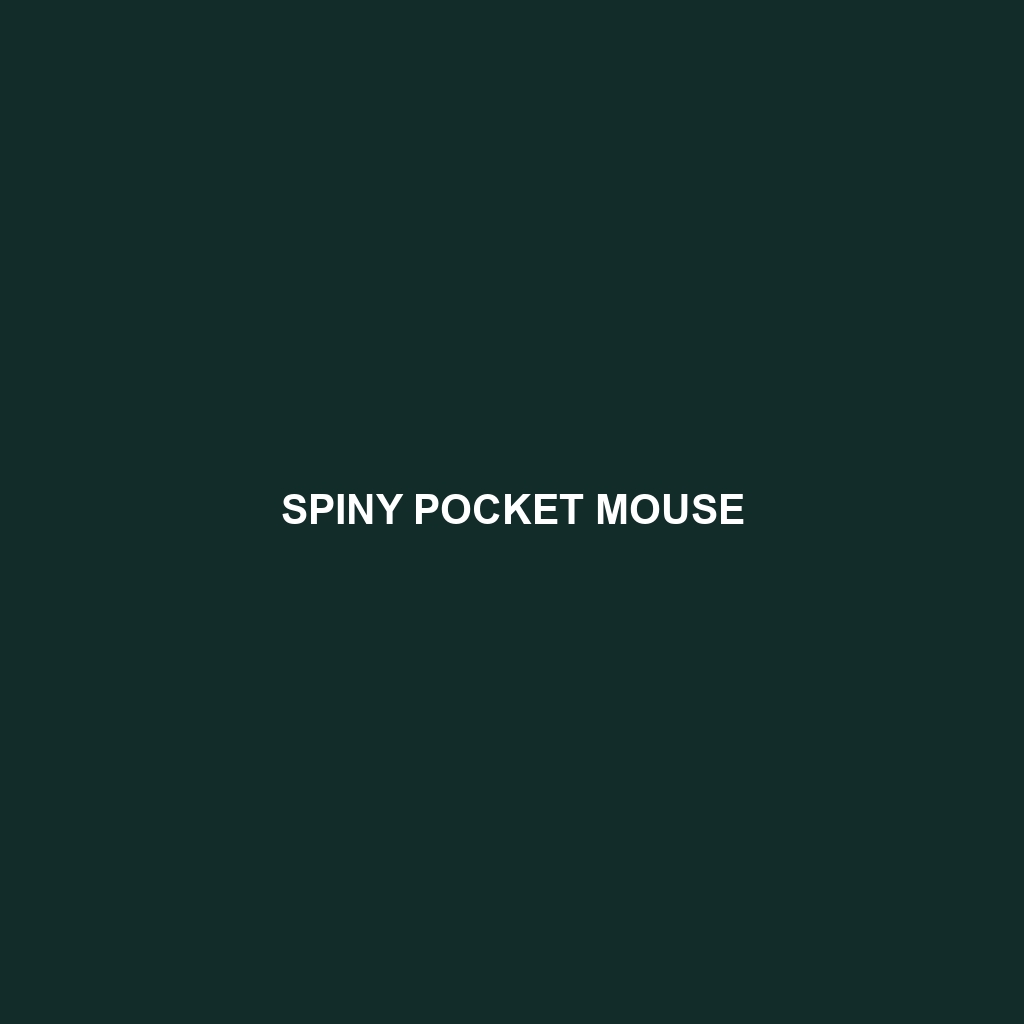Spiny Pocket Mouse ()
Common Name: Spiny Pocket Mouse
Scientific Name:
Habitat
The Spiny Pocket Mouse is primarily found in arid and semi-arid regions across the southwestern United States and northern Mexico. These environments include sandy deserts, grasslands, and scrub forests. Their preference for dry habitats allows them to thrive in areas with limited moisture, often burrowing in loose sands or soil to escape extreme temperatures.
Physical Characteristics
This small rodent measures approximately 10 to 15 cm in length, including a tail that can be about the same length as its body. The Spiny Pocket Mouse is distinguished by its coarse fur, which varies in color from light brown to gray, often adorned with darker stripes along its back. Its prominent ears and large eyes are adaptations for nocturnal activity, and its long whiskers enhance its sensory perception.
Behavior
Spiny Pocket Mice are primarily nocturnal, exhibiting a range of behaviors that adapt them to their desert habitats. They are known for their agility and speed, allowing them to evade predators effectively. These mice are also skilled diggers, using their strong forelimbs to create extensive burrow systems for nesting and protection. During the warmer months, they may engage in social behaviors, including forming temporary groups.
Diet
The diet of the Spiny Pocket Mouse mainly consists of seeds, grains, and plant matter, although they will also consume insects when available. This opportunistic feeding behavior allows them to adapt to the seasonal abundance of food sources in their environment. Their ability to store food in their cheek pouches and transport it back to their burrows is a notable characteristic that helps them survive in challenging conditions.
Reproduction
Spiny Pocket Mice breed throughout the spring and summer, with peak activity occurring during warmer months. After a gestation period of about 25 days, females typically give birth to three to five young. The offspring are weaned after approximately three weeks and are capable of independent living shortly after. This rapid reproductive cycle is essential for maintaining populations in their natural habitats.
Conservation Status
Currently, the Spiny Pocket Mouse is not classified as endangered or vulnerable; however, habitat loss due to urban development and agriculture poses potential threats to its population. Conservation efforts are essential to monitor their ecosystems and ensure their habitats remain intact.
Interesting Facts
The Spiny Pocket Mouse has adapted unique traits that allow it to survive in extreme desert climates, such as the ability to extract moisture from its food rather than relying solely on water sources. Additionally, it is renowned for its remarkable jumping ability, which some call “the desert gymnast!”
Role in Ecosystem
As a herbivore, the Spiny Pocket Mouse plays a vital role in its ecosystem by aiding in seed dispersal and serving as a food source for various predators, including snakes and birds of prey. Their burrowing activities also help aerate the soil, promoting plant growth and maintaining the health of their desert environment.
